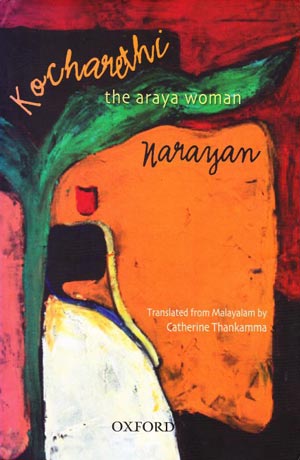
New Delhi: Oxford University Press, 2011

New Delhi: Orient Blackswan, 2009
Two novels that capture local history in English translation
Each novel is written from a different angle, yet both chronicle the lives of people attached to their land and customs while facing the pressures imposed by mainstream society: one by male Malayalam writer ‘Narayan’ who hails from Kerala’s Malayarayar community; and the other by Rajam Krishnan (1925-2014), a well known Tamil novelist who drew inspiration from her life amidst the Badaga communities in the Nilgiri mountains. Both portray people who see change as being unavoidable in economical terms if not attractive as education promises an end to oppression and exploitation; yet neither envisages lasting benefits for the people concerned until their rights and aspirations – notably access to ancestral lands and the constitutionally guaranteed right to benefit (again) from their natural resources – are also being taken into account.
“In his play Muktadhara (The Waterfall), Tagore robustly employs this element of freedom. The play relates the story of an exploited people and their eventual release from it. [Today, when] tribal populations across India are being uprooted with impudence Tagore’s message of freedom, in all its shades, is of utmost relevance.” – Bhaswati Ghosh in Freedom in Tagore’s Plays | Learn more >>
Learn more
- Badaga community
- Malayarayar [Malayarayan] community
- Narayan: First novel by an Adivasi in Kerala – Kocharethi
- Rajam Krishnan (1925-2014) – Obituary by G. Swaminathan in The Hindu, October 23, 2014
Accord | Ashwini community health programme | Gudalur | Nilgiri | Shola Trust | Viswa Bharati Vidyodaya Trust
Find scholarly books, poetry and fiction relating to tribal culture – Indian publishers
List of sites covered by this Google custom search engine
To find children’s and educational books or search Indian periodicals, magazines, web portals and other sources safely, click here >>
Search tips
Combine the name of any particular state, language or region with that of any tribal (Adivasi) community.
Add keywords of special interest (music, poetry, dance just as health, sacred grove and biodiversity); learn about the rights of Scheduled Tribes such as the “Forest Rights Act” (FRA); and the United Nations “Declaration on the Rights of Indigenous Peoples”, “Universal Declaration of Human Rights”, “women’s rights”, or “children’s right to education”.
Ask a question that includes “tribal” or “Adivasi”, for instance: “Adivasi way of life better?” (or “tribal way of life worse?”)
Specify any particular issue or news item (biodiversity, bonded labour and human trafficking, climate change, ecology, economic development, ethnobotany, ethnomedicine, global warming, hunter-gatherers in a particular region or state, prevention of rural poverty, water access).
For official figures include “scheduled tribe ST” along with a union state or region: e.g. “Chhattisgarh ST community”, “Himalayan tribe”, “Scheduled tribe Tamil Nadu census”, “ST Kerala census”, “Particularly Vulnerable Tribal Group Jharkhand”, “PVTG Rajasthan”, “Adivasi ST Kerala”, “Adibasi ST West Bengal” etc.
In case the Google Custom Search window is not displayed here try the following: (1) toggle between “Reader” and regular viewing; (2) in your browser’s Security settings select “Enable JavaScript” | More tips >>
Note: hyperlinks and quotes are meant for fact-checking and information purposes only | Disclaimer >>
Find publications by reputed authors (add “open access” for freely downloadable content)
See also
Books on tribal culture and related resources
eBook | Background guide for education
Languages and linguistic heritage
People’s Linguistic Survey of India | Volumes (PLSI) | PeoplesLinguisticSurvey.org
Tips for using interactive maps
Toggle to normal view (from reader view) should the interactive map not be displayed by your tablet, smartphone or pc browser
For details and hyperlinks click on the rectangular button (left on the map’s header)
Scroll and click on one of the markers for information of special interest
Explore India’s tribal cultural heritage with the help of another interactive map >>